Kirby Larson's Blog, page 35
April 12, 2013
Friend Friday
Okay: something weird happened. The really great updated post I had prepared for my friend, Liesl Shurtliff, vanished. One minute it was there. The next it was gone, replaced with the rough draft I'd created weeks ago.
With HUGE apologies to Liesl, here is her guest post.
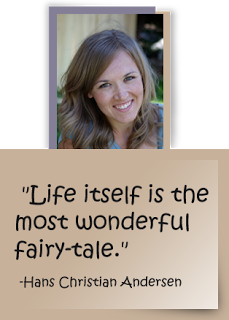
True Stories
When I first started writing, I resisted fantasy. I had always loved reading the genre, but somehow I got the idea that in order to be taken seriously as a writer I needed to write serious stuff, things that really could happen or really did happen. True Stories. Admittedly, I also thought this would somehow be easier. (This is not true at all, by the way.) Even though I enjoyed fantasy, I personally didn’t think I was creative enough to write well in the genre. All the fantasy books I had read just seemed so imaginative and beyond my own capability.
Kirby Larson was one of my first writing teachers. While I studied with her, everything I wrote was realistic fiction—no magic, no fairies or elves or dragons. (Oh wait. I vaguely remember one story with a flying scooter. It was so awful, maybe that’s why I didn’t think I could write fantasy!) Kirby was an excellent mentor who encouraged me and helped me develop my skill as a writer, but it wasn’t until I finished up my class with Kirby that I considered dipping my toes in fantasy, and a fairy tale no less. I told myself that it was merely an experiment. I’d just try it out for fun, but not feel pressure to take it seriously.
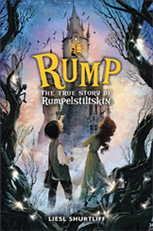
To my surprise, the more I wrote this little fairytale, the more I felt my imagination and creativity blossom. I also began to see how important and worthwhile fantasy and fairy tales really are, for even though the stories are full of the impossible, they speak symbolically of things that are true. Fantasy offers another lens to view truths that can’t always be proven, only shown. This is at the heart of all fiction, realistic or fantasy. This is what I hope I accomplished in my story of Rump. It’s not real, but I hope it’s true.
Learn more about Liesl at her website; click here to read a great interview with Liesl and her editor, Katherine Harrison.
With HUGE apologies to Liesl, here is her guest post.

True Stories
When I first started writing, I resisted fantasy. I had always loved reading the genre, but somehow I got the idea that in order to be taken seriously as a writer I needed to write serious stuff, things that really could happen or really did happen. True Stories. Admittedly, I also thought this would somehow be easier. (This is not true at all, by the way.) Even though I enjoyed fantasy, I personally didn’t think I was creative enough to write well in the genre. All the fantasy books I had read just seemed so imaginative and beyond my own capability.
Kirby Larson was one of my first writing teachers. While I studied with her, everything I wrote was realistic fiction—no magic, no fairies or elves or dragons. (Oh wait. I vaguely remember one story with a flying scooter. It was so awful, maybe that’s why I didn’t think I could write fantasy!) Kirby was an excellent mentor who encouraged me and helped me develop my skill as a writer, but it wasn’t until I finished up my class with Kirby that I considered dipping my toes in fantasy, and a fairy tale no less. I told myself that it was merely an experiment. I’d just try it out for fun, but not feel pressure to take it seriously.

To my surprise, the more I wrote this little fairytale, the more I felt my imagination and creativity blossom. I also began to see how important and worthwhile fantasy and fairy tales really are, for even though the stories are full of the impossible, they speak symbolically of things that are true. Fantasy offers another lens to view truths that can’t always be proven, only shown. This is at the heart of all fiction, realistic or fantasy. This is what I hope I accomplished in my story of Rump. It’s not real, but I hope it’s true.
Learn more about Liesl at her website; click here to read a great interview with Liesl and her editor, Katherine Harrison.
Published on April 12, 2013 16:06
Friend Friday
I am so very pleased to share the good news about Liesl Shurtliff's new book, Rump. Liesl was a student of mine when I taught for the Institute of Children's Literature and I knew she had the right stuff. But I had no idea she could take one of the least-loved characters of fairy tales, Rumplestiltskin, and make me care about him.
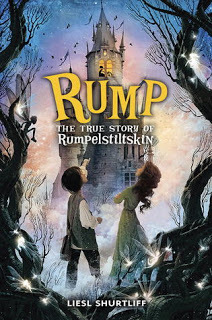
Adventure, danger and humor are woven into one golden package in this fun read. Buy two copies and donate one to your local elementary school!

Adventure, danger and humor are woven into one golden package in this fun read. Buy two copies and donate one to your local elementary school!
Published on April 12, 2013 07:30
April 11, 2013
Thursday's Thought
“All that I hope to say in books, all that I ever hope to say, is that I love the world.”
E.B. White
Published on April 11, 2013 07:00
April 9, 2013
Teacher Tuesday
As Jason Lewis testified in last week's Teacher Tuesday post, the children's literature community on Twitter is amazing. Case in point: Reilly Posey, who teaches fifth grade reading and writing at Vincent Farm Elementary in White Marsh, Maryland. I was intrigued by Reilly's tweets and reached out to her. Just like every other teacher I've tagged to be part of this feature, she quickly said yes. Before we learn more about how she connects kids and books, let's take a peek at her past!
 Little Reilly ready for kindergarten
Little Reilly ready for kindergartenFavorite school lunch as a kid: I have two. Nachos with chili and cheese, and chicken patty. Best friend in grade school: I moved around a lot. I went to 4 different elementary schools! I can’t say that I really had one best friend who I went to school with, but I have one friend who I have known since I was in the 3rd grade. His name is Jeff. Times you were the new kid in school: Five (I not only went to four different elementary schools, but I also ended up at a middle school that my elementary school didn’t feed into, so I was new in sixth grade, too!) Teacher who inspired you to stretch: My first grade teacher, Ms. Lee. She gave me my first exposure to books and taught me to love reading. I also remember looking forward to going to school every day when I was in her class. We did all kinds of neat things! She and I are “Facebook Friends” now. The one thing you always wished you could do in grade school but never achieved: I wish I had stuck with an instrument. I started the piano, but we moved across country and didn’t bring it with us. Then, in fourth grade, I began the violin but didn’t stick with it when I moved to my new school in fifth grade.
Reilly, you mentioned to me that you have implemented “reading workshop” in your classroom this year, for the first time. First, can you give a brief description of reading workshop?
In my classroom, reading workshop is a combination of a lot of different things. About 90% of the time, it consists of me teaching various reading skills and strategies during a mini lesson (lasting no longer than 20 minutes) and then students applying that knowledge to their self-selected books. When I teach a skill that requires a specific kind of text, I still try to offer choice (e.g. pick from one of three National Geographic articles). As students are applying their learning to their reading, I work around the room conducting conferences, helping students select new books, re-teaching, and pulling small groups as needed.
What prompted you to implement reading workshop in your classroom?
I was tired of our current anthology. I was bored teaching it, and I knew the majority of the kids were bored reading it. I also had lost my confidence in my teaching. When everything is pretty much done for you, it doesn’t push you to think outside of the box. Not only that, but so many students were falling through the cracks because the teaching was not individualized enough for them. I felt like I wasn’t doing my best teaching.
Can you talk more about response journals? What are students responding to? What do some of their responses look like?
This year, response journals have been a means of communicating with the students about our class read aloud. As I read, the students take notes and jot down thinking in the back half of their journal. This might be something they came up with on their own, or a comment another student made that sparked an idea. Then, when we are finished reading, the students spend about 10 minutes working on a letter to me to tell me about their thinking. I collect journals on a specific schedule (here is a link to Reilly's blog post response journals) and then read and write back to them. It’s really been a great way of stretching my students’ thinking, especially those who prefer not to share out. Their responses have come a long way. You can see a huge difference in their work from the beginning of the year until now. Their response are often multiple pages, and I get a lot of complaints when I let them know that time is up!
What kinds of outside resources, if any, do you employ with reading workshop (Skype, author websites, guest speakers)?
I pull in various trade books when I need something specific to help me teach a concept. I’ve also been in touch with a lot of other great teachers via Twitter. We’ve also connected with authors via Twitter, Skype, and recently in person!
Read-alouds are an important part of reading workshop. How do you select titles?
I try to pick titles that my students may not select on their own. I also try to stick with books I have already read to cut down on “surprises” that take me off guard. Mixing the classics and the award winners with current books they can relate to is important to. I spend time thinking about what I want to achieve with the read aloud, as these books often become my mentor text for mini-lessons in reading workshop.

For example, The One and Only Ivan by Katherine Applegate was PERFECT for teaching figurative and descriptive language as well as how characters change over time.
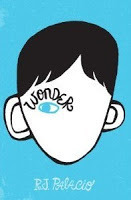
Wonder by R.J. Palacio helped me to teach the importance of taking other characters’ viewpoints into consideration, as well as theme.
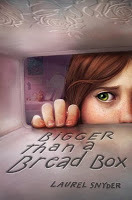
I used Laurel Snyder's Bigger Than a Breadbox to teach symbolism, relationships between characters, and how a character’s actions influence the plot. It was also great for making connections to earlier events in the text to note their significance. I also let my students vote sometimes. This helps with buy in.
How do you show your students your own love of reading?
I talk to them about books all the time. When I see a student reading a book I loved, my eyes light up and I might even interrupt what I am doing to have a quick mini-conference with them. This is how I have infected many of my students with a love of the Harry Potter books, something many of them would have never picked up because they are “too thick.” When I read something new, I share it briefly, show a book trailer if there is one, and just get excited about it. (This happened recently with Hattie Big Skyand now I think I may need to purchase some additional copies for the waiting list!)
What has changed in your classroom since you’ve initiated reading workshop? Changes in students’ skills or interest in reading?
The overall attitude about reading has changed for all of my students. Even if they don’t all LOVE it, they at least enjoy it more than they did when they came to me. I see them taking books home more often, reading in between assignments, talking with one another about books in the hall, etc. It’s awesome! Even though I try not to put too much stock into test scores, I have seen serious jumps from their fall benchmarks to their spring ones. Last year when I partially implemented it, I had 13 students makes huge gains in their state test scores (going from “proficient” to “advanced”).
What has surprised you the most about reading workshop?
It’s not as hard as I thought it would be. In fact, I feel a lot less stressed as a teacher. I know my students’ and their abilities so much better than I did in the past because I spend more time with them one-on-one. Planning is much easier because I teach to their needs, not from a preplanned guide. I don’t feel rushed to “fit it all in” because I can hit multiple learning goals in one day through lessons, discussions, and conferences.
Would you encourage other teachers to adopt reading workshop? Why or why not?
YES! A thousand times yes! In my opinion, it just makes sense. Teach students what they need to know based on what you have learned about them instead of what a curriculum guide thinks they need to know. It improves your relationship with your students tenfold. They know I care about them and their learning because I am constantly checking in with them. Not only that, but reading workshop creates real world readers…not just kids who know how to read.
What do you wish you’d know when you started?
How easy it actually is. I put it off for a long time because it seemed so complicated. But, thanks to Twitter and my “Tweens,” I discovered a huge support system that made it very easy to transition. There are also a ton of great resources out there to help you get started. Fountas and Pinnell’s Guiding Readers and Writers (Grades 3-6): Teaching, Comprehension, Genre, and Content Literacy has ideas for mini-lessons and a step-by-step guide to get started. Franki Sibberson has several books that I found helpful, such as The Joy of Planning and Day-to-Day Assessment in the Reading Workshop. They were my go-to books when I wasn’t sure where to go this year.
Thank you, Reilly, for this inspiring post. I certainly wish I'd had you for a reading teacher when I was a kid! I hated doing book reports because it made the books I loved seemed less like "mine." This approach might have made me a more thoughtful story consumer!
For more information about reading workshops and other things reading, head over to Reilly's blog, The Polka Dot Owl. You can also follow her on Twitter: @PolkaDotOwlBLog
Published on April 09, 2013 06:30
April 5, 2013
Friend Friday
I am so pleased to introduce you to Liesl Shurtliff, today's guest blogger on Friend Friday.
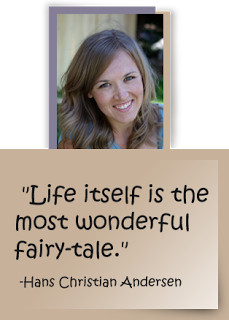
True Stories
When I first started writing, I resisted fantasy. I had always loved reading the genre, but somehow I got the idea that in order to be taken seriously as a writer I needed to write serious stuff, things that really could happen or really did happen. True Stories. Admittedly, I also thought this would somehow be easier. (This is not true at all, by the way.) Even though I enjoyed fantasy, I personally didn’t think I was creative enough to write well in the genre. All the fantasy books I had read just seemed so imaginative and beyond my own capability.
Kirby Larson was one of my first writing teachers. While I studied with her, everything I wrote was realistic fiction—no magic, no fairies or elves or dragons. (Oh wait. I vaguely remember one story with a flying scooter. It was so awful, maybe that’s why I didn’t think I could write fantasy!) Kirby was an excellent mentor who encouraged me and helped me develop my skill as a writer, but it wasn’t until I finished up my class with Kirby that I considered dipping my toes in fantasy, and a fairy tale no less. I told myself that it was merely an experiment. I’d just try it out for fun, but not feel pressure to take it seriously.
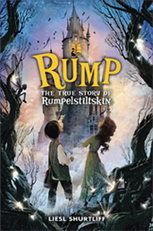
To my surprise, the more I wrote this little fairytale, the more I felt my imagination and creativity blossom. I also began to see how important and worthwhile fantasy and fairy tales really are, for even though the stories are full of the impossible, they speak symbolically of things that are true. Fantasy offers another lens to view truths that can’t always be proven, only shown. This is at the heart of all fiction, realistic or fantasy. This is what I hope I accomplished in my story of Rump. It’s not real, but I hope it’s true.
Read a great interview with Liesl and her editor, Katherine Harrison, here. And lucky us! Liesl's book has just published so we can all run right out and buy it.
Published on April 05, 2013 06:30
Friend Friday
I'll admit, it's a stretch to use the word "friend" for people I've never even met. Yet, when someone writes a book that I connect with, how can I consider them anything but a friend?
Case in point: I've never met Amy Timberlake but she clearly shares my passion for historical fiction so I know we'd have a great time over a cup of coffee.
I was introduced to her book, One Came Home, at ALA midwinter when my own editor pressed it on me during a stop at the booth. And who could resist the title's tagline? "A sister lost. A body found. The truth buried." I couldn't.
There was a feel of True Grit to this book, in that a young girl takes it upon herself to seek justice and truth. And the backdrop of the carrier pigeon frenzy of the 1890s brought to mind Jerry Spinelli's powerful, Wringer. And Amy Timberlake is a wizard with character development, reminding me very much of Linda Urban, and especially A Crooked Kind of Perfect.
Despite those elements of similarities, this book is its own unique self. Georgie is stubborn and naive--tattling on her sister for an illicit kiss -- and yet she's got more savvy than the adults in the family who seem to accept the fact that simply because a body is wearing her sister's dress, it is her sister.
Georgie's quest to find out the truth about her sister is grueling and dangerous and not exactly satisfying. Like those pigeons that trigger the story's events, she learns that life can be messy. But, we leave Georgie celebrating that mess, not undone by it.

Case in point: I've never met Amy Timberlake but she clearly shares my passion for historical fiction so I know we'd have a great time over a cup of coffee.
I was introduced to her book, One Came Home, at ALA midwinter when my own editor pressed it on me during a stop at the booth. And who could resist the title's tagline? "A sister lost. A body found. The truth buried." I couldn't.
There was a feel of True Grit to this book, in that a young girl takes it upon herself to seek justice and truth. And the backdrop of the carrier pigeon frenzy of the 1890s brought to mind Jerry Spinelli's powerful, Wringer. And Amy Timberlake is a wizard with character development, reminding me very much of Linda Urban, and especially A Crooked Kind of Perfect.
Despite those elements of similarities, this book is its own unique self. Georgie is stubborn and naive--tattling on her sister for an illicit kiss -- and yet she's got more savvy than the adults in the family who seem to accept the fact that simply because a body is wearing her sister's dress, it is her sister.
Georgie's quest to find out the truth about her sister is grueling and dangerous and not exactly satisfying. Like those pigeons that trigger the story's events, she learns that life can be messy. But, we leave Georgie celebrating that mess, not undone by it.

Published on April 05, 2013 06:00
April 4, 2013
Thursday's Thought
“Everywhere I go I'm asked if I think the university stifles writers. My opinion is that they don't stifle enough of them. There's many a best-seller that could have been prevented by a good teacher.”
Flannery O'Connor
Flannery O'Connor
Published on April 04, 2013 07:00
April 2, 2013
Teacher Tuesday
I "met" Jason Lewis through his tweets about books (especially apropos given today's topic). I knew he was someone I wanted to hear more from and he instantly said yes when I asked if I could interview him. He teaches reading, writing and social studies to two groups of fifth graders at Tyngsborough Elementary School in Tyngsborough, MA. I know you're eager to learn how he shares his passion for reading and writing with his students, but first we're going to take a quick peek at his past:
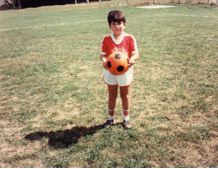 Jason in 1st or 2nd grade. He has a little less hair now.
Jason in 1st or 2nd grade. He has a little less hair now.Favorite school lunch as a kid: I remember bringing a lot of peanut butter and jelly and tuna fish sandwiches, still favorites today! When I did buy, I liked the chicken nuggets.Times you were the new kid in school: Sixth grade, first year of middle school. Teacher who inspired you to stretch: My sixth grade teacher, Mr. Jordan (no, not the basketball player!). He was my first male teacher. I remember laughing a lot in his class and learning how much fun reading was.The one thing you always wished you could do in grade school but never achieved:I wished I had the chance to write like my fifth graders do today and I wish I made it to the top of the rope in gym class! J
Let's explore how Jason connects kids and books.
Jason, a few years ago, your school departmentalized the upper elementary grades and you assumed responsibility for teaching English Language Arts/Social Studies, and your partner teacher handles math and science. You shared with me that, despite your passion for reading and writing, that passion wasn’t shared by your students.
It was natural for me to want to teach English Language Arts and Social Studies when the upper grades departmentalized. I had always loved reading myself and thought I was doing a good job passing this love of reading on to my students. We were writing and reading every day, sharing new books, participating in literature circles, and discussing books. I really thought my students were loving books as much as I was, but boy was I wrong, something I didn’t realize until this year.
Something changed for you this past summer. What was that something?
This is an excerpt from a letter that I wrote to the staff at my school trying to hook them on Twitter. “For the last year I’ve watched my wife read her Twitter account each night to “check in” on Hollywood! She never “tweeted” anything, just reading about the rich and famous. So when my assistant principal sent us an e-mail telling us about his positive Twitter experiences, I laughed and immediately said no to myself. Later that same afternoon, while sitting through a two hour track practice for my son, I decided to check out this Twitter thing. With the help of my wife, the Twitter professional, I easily created an account and I was ready to tweet! I was certain that this would become another one of those apps that I never touched on my phone after the initial download. I typed in some of the names that my A.P. recommended and I started reading some of their tweets. Most of it was about school related topics. I was instantly intrigued reading what these people had to say about all things education.”
What prompted you to join the Twitter conversation?
A few days later the list of people I was following continued to grow. I learned that a group of people hold a fifth grade chat every Tuesday evening. There’s actually a ton of different chats including different grade levels, subject areas, elementary chats, book chats, etc. I was on the couch with my iPhone ready for the Tuesday chat, thinking I was going to “watch” the conversation and not participate in it. That didn’t last long! They started talking about beginning of the year activities and assessments, read-aloud books, technology, etc. After I figured out how to “tweet” I posted a question about blogging and received a ton of great information. I received great ideas from setting up my classroom and ice-breakers to reading and writing ideas. It was a good thing I quickly learned how to send myself copies of tweets, because after one hour-long fifth grade chat, I had a dozen different emails with ideas I wanted to look into further. Needless to say, I was adding many new names to my expanding list of followers. After only a week, I was hooked on Twitter! It’s neat “talking” to educators from across the country, sharing ideas, borrowing ideas, asking questions, and learning new things.
You shared with me that you feel Twitter, and your Personal Learning Network (PLN) is helping you reach more students. How do you feel it is helping to reach them?
For many years, I truly thought I was turning most of my students into life-long readers, but Twitter has shown me that there’s so much more that I could be doing to reach my students. Besides the countless ideas that I have incorporated into my classroom this year to engage my students, it was the simplest of ideas that I believe has had the strongest impact.
When I started following other educators, they talked (or tweeted) nonstop about all the books they were currently reading. They weren’t reading their personal favorite adult novels, but children books. Specifically, they were reading picture books and young adult novels. I have always loved reading, but I was failing at reading the books my students were reading. I ferociously read adult novels during the summer and read an occasional young adult book during the school year.
From the conversations I was having with other teachers about children’s and young adult’s literature, it was clear to see that something needed to change. I decided to read the books my students were reading during the school year with the same ferociousness that I had been reading with during my summers, and the results have been nothing short of amazing.
There have been many benefits to reading the same books that my students are reading. Some of these include books that I read or recommend seem to fly off the shelf, the kids are really excited to see what book I’m currently reading and what book is “on deck” and gives them the opportunity to try books that they may never have tried. Most importantly, I can have more meaningful conversations about books with my students that I wasn’t able to have before, and I’m no longer “telling” my students how much I love to read. With a book always in my hands, I’m also showing them.
At the beginning of the school year, my students and I set reading goals. One of those goals was the amount of books we were going to complete. For the first time, I also set a goal. My goal was to read 70 young adult novels. It is March as I write this, and I’m already at 60 books.
What skills do you see your students gaining from what you’ve learned from Twitter?
Many of the ideas I’ve found and used have centered around reading. With that being said, I’ve seen many more students gain a love of reading than ever before. Are there still students I haven’t been able to reach? Sure, but I have many more strategies to pull from. Another huge skill I think my students have gained from what I’ve been able to learn on Twitter is that there’s many different ways to “talk” about a book. Of course there’s the face-to-face discussion, but they can also write messages to one another “on the wall,” blog about the books they are reading, and create their own book talks and trailers.
Do you have a favorite anecdote of how your PLN/Twitter has changed a student?
I don’t have one favorite anecdote of how Twitter has changed a student…I have many! At the beginning of the year, I give my students a reading inventory that asks them about their reading habits, likes, and dislikes. More students than I would have hoped for said they weren’t a fan of reading or that they weren’t a good reader. My favorite anecdotes include the smiles on so many of my kids’ faces when they are really loving a book, when they are enjoying a book in a new genre, can’t wait to begin reading, or ask me to give them five more minutes when reading is over. It’s these smiles that make me smile, and I usually give them ten more minutes to read.
What do you think is the biggest obstacle to kids sharing your passion for reading and writing?
Without a doubt, it has to be video games. Those kids that I’m still trying to reach, and even some who love to read, would still rather play a video game than pick up a book. I think blogging about their books and allowing the kids to bring in their electronic devices for reading helps, but some kids would still rather have a controller in their hands than a book.
Would you encourage other teachers/librarians to join the Twitter community?
Yes, yes, yes! Absolutely yes! I feel that after teaching for so many years, I was stuck in a rut. I was doing many of the same things over and over again and didn’t even realize that my kids weren’t enjoying reading as much as I wanted them to. Twitter has been so refreshing for me and my teaching and has opened my eyes to many new ideas. Not only would Twitter open the minds of other teachers/librarians to activities from teachers all over the world, Twitter would give them an outlet to discuss children’s literature. Many of the books I’ve read and recommended to my students were because of my discussions with other teachers or with the authors themselves on Twitter.
What has most surprised you about your participation in Twitter?
I still can’t believe that I’m on Twitter! There are people who are on ALL the time, but that’s not me! Once the school year began it has really been hard to be on Twitter as much as I would like thanks to school work, reading, and my two sons. I check in from time to time and join certain chats, but try not to get sucked in until vacation times. However, what I really like about Twitter is no matter when I have a question I can go online and there are hundreds of other teachers around the world willing to give me quick advice, ideas, or answers.
What do you wish I’d asked you that I neglected to ask?
Which books have been my favorites this year? I’ve read many great books, but here are my five favorites in no particular order.
1. Wonder by R. J. Palacio2. Hattie Big Sky and Hattie Ever After by Kirby Larson (Not because you are interviewing me…I truly love Hattie’s voice in both books!)3. Percy Jackson series4. Because of Mr. Terupt by Rob Buyea 5. The False Prince by Jennifer Nielsen
It was a real treat to read this interview -- I found myself smiling just imagining the bookish energy in Jason's classroom. And his point about reading books his students are reading is one that can apply to all of us, not just teachers, because each one of us has opportunities to interact with kids over books. One of my favorite things to do when I visit schools is simply collect book recommendations from kids. Sometimes something that simple can ratchet up that interest in reading.
As a reluctant convert to Twitter myself, I have to second Jason's observations about how it's expanded my literary life. If you want to catch up on more of Jason's thinking, follow him:@jasontes5th
Published on April 02, 2013 06:00
March 29, 2013
Friend Friday
Nikki McClure can turn a piece of paper into something amazing, and all she uses is an exacto knife. I've long admired her cut-paper art on cards and calendars but didn't realize she was also a picture book creator.
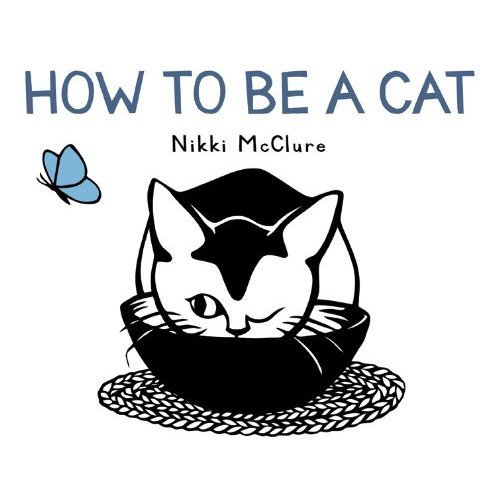
Her newest book follows a kitten as it learns the ins and outs of being a cat. Of course, there are struggles along with successes, a story line that young children (and old children, like me!) will certainly relate to. Cat lovers will especially be drawn to this charming book, but even if you aren't a feline fanatic, you'll want this for your collection.

Her newest book follows a kitten as it learns the ins and outs of being a cat. Of course, there are struggles along with successes, a story line that young children (and old children, like me!) will certainly relate to. Cat lovers will especially be drawn to this charming book, but even if you aren't a feline fanatic, you'll want this for your collection.
Published on March 29, 2013 07:00
March 28, 2013
Thursday's Thought
“The road to hell is paved with adverbs.”
Stephen King, On Writing
Stephen King, On Writing
Published on March 28, 2013 07:00



